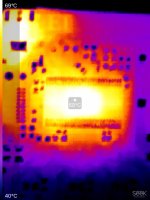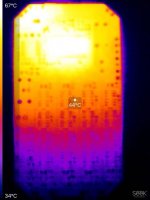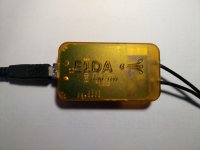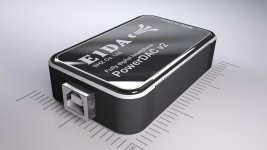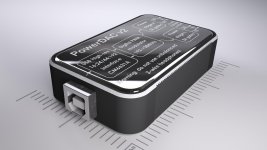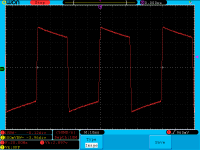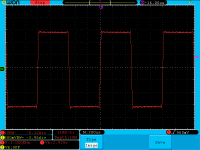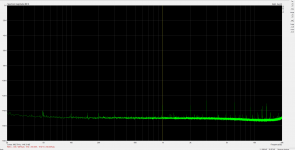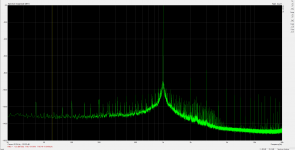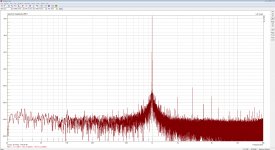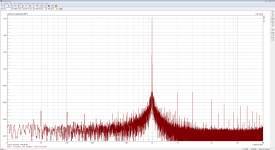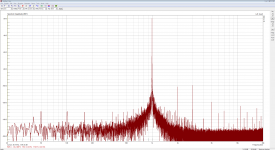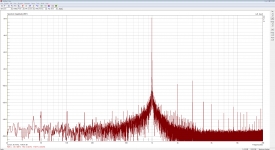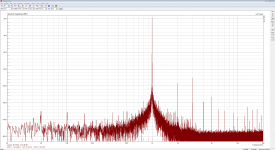probably, furthermore, the emulation of hd800s on my 400i according to innerfidelity plot, sound good in all respects but not in highs, which look obviously overamplified(12kHz +12db!). Yesterday I tried one more emulation, this time it is LCD2. The result is neer to ok, and actually, EQ gain was always around 0db unlike hd800s, hence, he400i much more similar to LCD2 than to hd800s. However, the peak around 1.6kHz +5db or so, is not really what I like to hear. I hope an original LCD2 has no such mid-frequency bump yet which simplify female vocal too much. Would be interesting how close my emulation feeling correlating to real stuff comparison?I wonder if Hifiman's famous "QC" has removed the peak on your set of HE400i?
I just back from meeting with Quad staff, here in SHZ. Actually, it is a mature English guy which responsible for sound quality. He caught the sound signature just by 10 seconds and said - "it sounds like all those $10000 digital amps! And I don't like it!" )) So he is 100% tube-guy and likes smoothy-comfortable sound, he agrees that my PowerDAC has a lot of details and they disturbs him listen to the music itself. He called my sound like HiFi-sound but they need Quad sound and this is not the same thing. I listened to their Quad ERA-1, and I think it looks better than its sound. It is not really neutral to me, I feel 1-2kHz bump probably +4-5db, and a bit boomy mid-bass. Highs quite nice and again very smoothly-comfortable. Versus he400i the ERA-1 sounds noticeably more voices-vocals(2kHz +4db) and more vocals body(200-300Hz +6db). Industrial Design of the ERA-1 is close to excellent - not similar to anything that presented on that market and the same time looks like a classic.
The very first my attempt of ID(Industrial Design). It goes very slow but I certainly enjoy the process. The extruded anodized aluminum case with CNC chamfer and polished stainless steel top/bottom caps with laser marking.
Attachments
Just finished test of the new PowerDAC version #2 which is smaller and less noise(-102dbA). 72 LVC gates power stage(the first one had 64) provides 1.3ohm output impedance and 0.432A output current per channel. In case USB3 with 0.9A rated current, PowerDAC can work safely at >=11.5ohm drivers and provide up to 1W/channel. I think, -102db(A) for an open loop system(no any feedback) is a very good result and it is close to ordinary headphone DAC+amp combos S/N.
PowerDAC V2 log: The latest version got BLE DSP control with IOS/Android apps, and some BOM cost optimization. The final case version is approved and I waiting for stainless steel punch samples with laser artwork to send assembled samples for Z-reviews youtube channel.
Attachments
-
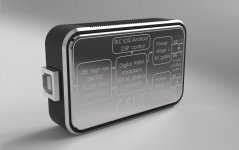 pdac2.jpg184.2 KB · Views: 100
pdac2.jpg184.2 KB · Views: 100 -
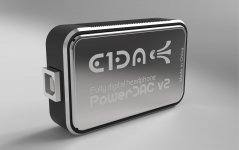 pdac2_top.jpg160.1 KB · Views: 98
pdac2_top.jpg160.1 KB · Views: 98 -
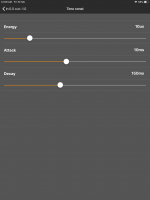 IMG_2116.PNG81.8 KB · Views: 60
IMG_2116.PNG81.8 KB · Views: 60 -
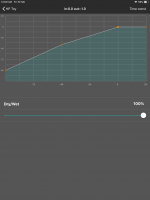 IMG_2115.PNG115 KB · Views: 67
IMG_2115.PNG115 KB · Views: 67 -
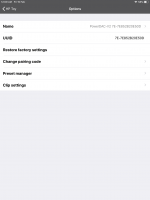 IMG_2117.PNG93.8 KB · Views: 65
IMG_2117.PNG93.8 KB · Views: 65 -
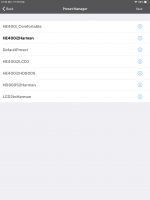 IMG_2118.PNG97.5 KB · Views: 341
IMG_2118.PNG97.5 KB · Views: 341 -
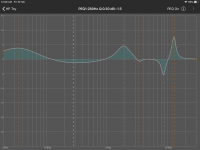 IMG_2114.PNG194.7 KB · Views: 355
IMG_2114.PNG194.7 KB · Views: 355 -
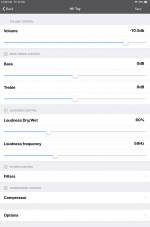 IMG_2112.PNG107.3 KB · Views: 361
IMG_2112.PNG107.3 KB · Views: 361 -
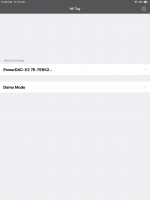 IMG_2111.PNG72.5 KB · Views: 367
IMG_2111.PNG72.5 KB · Views: 367 -
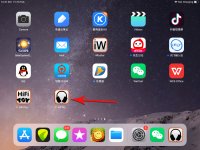 IMG_2119.jpg789 KB · Views: 366
IMG_2119.jpg789 KB · Views: 366
more pics:
Attachments
-
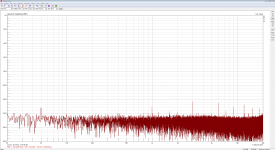 SN.png125.9 KB · Views: 94
SN.png125.9 KB · Views: 94 -
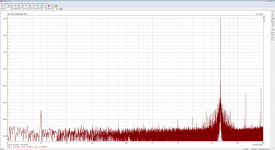 10db_6k3hz.png116.6 KB · Views: 102
10db_6k3hz.png116.6 KB · Views: 102 -
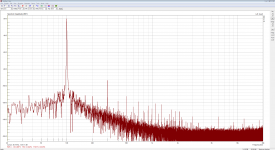 10db_100hz.png128.1 KB · Views: 99
10db_100hz.png128.1 KB · Views: 99 -
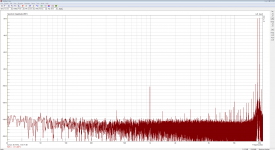 10db_20vs19khz.png129.3 KB · Views: 101
10db_20vs19khz.png129.3 KB · Views: 101 -
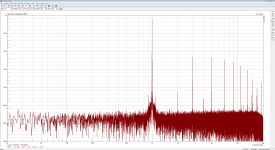 3.5VRMS_HE400I.png141.3 KB · Views: 91
3.5VRMS_HE400I.png141.3 KB · Views: 91 -
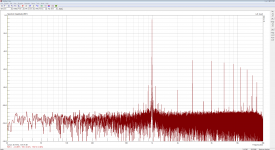 3.46VRMS_32Ohm.png141.3 KB · Views: 127
3.46VRMS_32Ohm.png141.3 KB · Views: 127 -
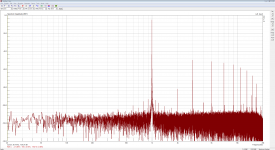 3.32VRMS_16Ohm.png137.2 KB · Views: 213
3.32VRMS_16Ohm.png137.2 KB · Views: 213 -
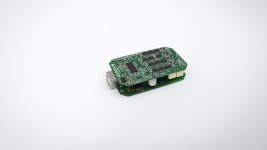 DSC_5778.jpg278.6 KB · Views: 218
DSC_5778.jpg278.6 KB · Views: 218 -
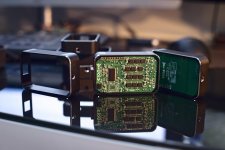 DSC_5754.jpg318 KB · Views: 201
DSC_5754.jpg318 KB · Views: 201
BTW, I prepared for production one more USB DAC + HPA model, I named that #9038S. Nothing is special if compare with PowerDAC V2 yet, however, I didn't see something in a USB dongle form factor even close to #9038S performances(that fact surprised me because DAC/HPA area is quite trivial technically and I have no idea why devices on the market so marginal regarding THD/SNR). There are one of top rated ES9038Q2M DAC in differential current mode with mems clock .5ps jitter, the best available of a high current opamps AD8397, and 2mm profile 1000uF/6.3V caps on the 5V rail, totally device contains 4000uF in such a tiny case! Over 350mW@32ohm@THD=1% fully differential 4 wire output 2.5mm jack. The drawbacks are 24/192 PCM only due to no room for XMOS USB->I2S converter, USB interface implemented on CM6642 QFN6x5mm, and the second one - the device is not so inexpensive as PowerDAC V2. Frequency response 5-90000Hz, 1kHz THD@-3dbfs<.0005% in the normal mode, and <.0004% in the performance mode(.00017%@-10fdbfs 24b/48k), in the SE mode THD = .25% where is almost only 2nd harmonic. S/N -125db(A) probably even better, I need anyhow arrange AP 555 to measure that more precisely. Output impedance around 100mOhm. Modes switching implemented in an easter eggs style, kinda buttonless stealth interface. The Performance mode continuously recalculates an optimal timing and PLL works too slow, so the THD are the best but the first half of second of track could be muted, actually, this is third drawback. Some THD screenshots, THD tags need to divide by 100 due to notch filter -40db +20db of linear gain.
Attachments
-
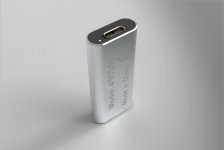 2019-04-16_19-12-59.jpg68.1 KB · Views: 114
2019-04-16_19-12-59.jpg68.1 KB · Views: 114 -
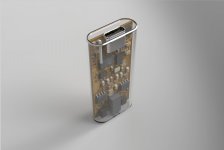 2019-04-16_19-32-26.jpg86.9 KB · Views: 156
2019-04-16_19-32-26.jpg86.9 KB · Views: 156 -
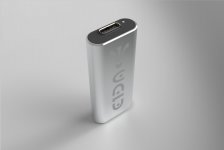 2019-04-16_19-39-16.jpg65.4 KB · Views: 149
2019-04-16_19-39-16.jpg65.4 KB · Views: 149 -
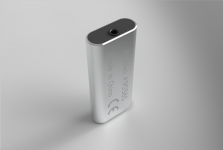 2019-04-16_19-53-21.png863.3 KB · Views: 108
2019-04-16_19-53-21.png863.3 KB · Views: 108 -
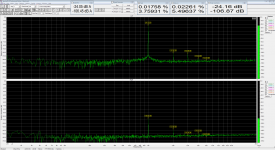 P_mode-10dbfs.png149.1 KB · Views: 118
P_mode-10dbfs.png149.1 KB · Views: 118 -
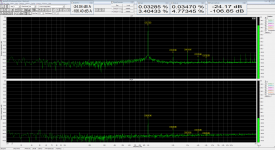 normal_mode-10dbfs.png150.4 KB · Views: 120
normal_mode-10dbfs.png150.4 KB · Views: 120 -
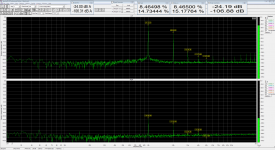 SE_mode-10dbfs.png150 KB · Views: 98
SE_mode-10dbfs.png150 KB · Views: 98
Last edited:
Thank you, but which one project you talking about? I just did by myself for myself what I needed but what I didn't find that on the market  The PowerDAC story started as an idea to implement a pure digital USB/headphone interface, similar to Dully Digital power Amplifiers(FDA) like Sharp SM-SX100(probably earliest FDA), Tact, Lindorf, Wadia etc $5-10K toys. Actually, I just bought HE400i headphones and found that I have not enough power/voltage to drive it from my phone or laptop. HE400i is awfully low sensitive headphones as most of planars. So between trivial DAC+Amp solution, I decided to get a PowerDAC, and due to my professional background(500A SMPS, thousands watts class D amps, DSP and so on) and also because I didn't find pure digital headphone solutions on the market, I decided to make my own truly DIY PowerDAC project. I have to say that Tact/Lyndorf FDA are expensive but not only because of high-end-brand or so, technically the task to get high-quality audio output 5-10 Ampers and 30-100V from the open-loop topology (without the feedback loop), it is quite challenging. Today we have some GaAs/GaN power stages for that and it is not cheap again. Well, fortunately, headphone doesn't need hundreds of watts and tens Ampers as well, so we can try to use there something widely available and inexpensive for example standard logic gates! That gates can be tied in parallel to provide more than enough current to feed your planars, with near to perfect switching quality(LVC gate has about 1nS per edge that's probably even better than bloody expensive GaAs/GaN power stage), and 5V USB rail can handle almost 2ch x 400mW@32ohm(with USB power splitter to get solid 5.0V from a power-bank instead of weak 4.2V from a smartphone's USB) or about 120db SPL undistorted sound. As to me, that is loud, maybe for some else really need louder but certainly not to me. To check that idea in the reality I took the same Texas Instrument's digital PWM modulator as used in monsters FDA only different power stage, in my case it looked like an array of logic ICs. I living in China so to order sample of proto PCB is very easy and fast over here. Probably next week after I got an idea regarding logic gates array as power stage, I got it listened to. The first point is that's is really the same sound signature as other FDA i.e. it is razor-like detailed sound. I know that not all audiophiles like that typical PowerDAC/FDA sound, they like to explain it so - we have to listen to music rather than its details. However, if you like a max transparent and max detailed sound, bingo, here you go! The very first proto PowerDAC showed that the idea to use logic gates array as a power stage isn't wrong. I got THD about .02%@-3dbfs(200mW) with no feedback at all, it means that the linearity of such power stage is simply exceptional. Someone can say - .02% isn't something WOW at all, my old HiFi had the same at 100W. And he'll be right, however, everyone class A/AB whatever tube or solid i.e. linear amp use tonnes of feedback amount to reduce THD and their initial linearity never being so high to show even 1% of distortions without feedback. That's why the feedback-less analog amp doesn't exist, in fact, people, including music production stuff, never heard feedback-less amps before FDA(and actually modern digital modulators are not really pure-digital as well and not really feedback free due to noise-shaper but this is a different story yet). Next 5-7 iterations of that project brought Signal/Noise ratio improvement up to <-106db(A), THD and jitter(with WM8804) was a bit improved as well, and BlueTooth Low Energy interface for DSP control by IOS/Android with preset sharing by skype/email/www etc. Also, the BOM cost was optimized, finally, was found the way to get high-performance PowerDAC for headphones with balanced 4 wire interface and IOS/Android app DSP control with moderate BOM cost(expected retail cost $50, if no brands/distributors/robbers involved).
The PowerDAC story started as an idea to implement a pure digital USB/headphone interface, similar to Dully Digital power Amplifiers(FDA) like Sharp SM-SX100(probably earliest FDA), Tact, Lindorf, Wadia etc $5-10K toys. Actually, I just bought HE400i headphones and found that I have not enough power/voltage to drive it from my phone or laptop. HE400i is awfully low sensitive headphones as most of planars. So between trivial DAC+Amp solution, I decided to get a PowerDAC, and due to my professional background(500A SMPS, thousands watts class D amps, DSP and so on) and also because I didn't find pure digital headphone solutions on the market, I decided to make my own truly DIY PowerDAC project. I have to say that Tact/Lyndorf FDA are expensive but not only because of high-end-brand or so, technically the task to get high-quality audio output 5-10 Ampers and 30-100V from the open-loop topology (without the feedback loop), it is quite challenging. Today we have some GaAs/GaN power stages for that and it is not cheap again. Well, fortunately, headphone doesn't need hundreds of watts and tens Ampers as well, so we can try to use there something widely available and inexpensive for example standard logic gates! That gates can be tied in parallel to provide more than enough current to feed your planars, with near to perfect switching quality(LVC gate has about 1nS per edge that's probably even better than bloody expensive GaAs/GaN power stage), and 5V USB rail can handle almost 2ch x 400mW@32ohm(with USB power splitter to get solid 5.0V from a power-bank instead of weak 4.2V from a smartphone's USB) or about 120db SPL undistorted sound. As to me, that is loud, maybe for some else really need louder but certainly not to me. To check that idea in the reality I took the same Texas Instrument's digital PWM modulator as used in monsters FDA only different power stage, in my case it looked like an array of logic ICs. I living in China so to order sample of proto PCB is very easy and fast over here. Probably next week after I got an idea regarding logic gates array as power stage, I got it listened to. The first point is that's is really the same sound signature as other FDA i.e. it is razor-like detailed sound. I know that not all audiophiles like that typical PowerDAC/FDA sound, they like to explain it so - we have to listen to music rather than its details. However, if you like a max transparent and max detailed sound, bingo, here you go! The very first proto PowerDAC showed that the idea to use logic gates array as a power stage isn't wrong. I got THD about .02%@-3dbfs(200mW) with no feedback at all, it means that the linearity of such power stage is simply exceptional. Someone can say - .02% isn't something WOW at all, my old HiFi had the same at 100W. And he'll be right, however, everyone class A/AB whatever tube or solid i.e. linear amp use tonnes of feedback amount to reduce THD and their initial linearity never being so high to show even 1% of distortions without feedback. That's why the feedback-less analog amp doesn't exist, in fact, people, including music production stuff, never heard feedback-less amps before FDA(and actually modern digital modulators are not really pure-digital as well and not really feedback free due to noise-shaper but this is a different story yet). Next 5-7 iterations of that project brought Signal/Noise ratio improvement up to <-106db(A), THD and jitter(with WM8804) was a bit improved as well, and BlueTooth Low Energy interface for DSP control by IOS/Android with preset sharing by skype/email/www etc. Also, the BOM cost was optimized, finally, was found the way to get high-performance PowerDAC for headphones with balanced 4 wire interface and IOS/Android app DSP control with moderate BOM cost(expected retail cost $50, if no brands/distributors/robbers involved).
Thank you sir. It seems I have to explain some pics, 10db.png 20db.png etc stands -10dbfs and -20dbfs level. 3.32VRMS_16Ohm.png means 3.32VRMS output at 16ohm load resistors i.e. 689mW@THD 1% each channel. Digital nature of PoerDAC don't let to get 1% of THD at 0dbfs level, so I increased the gain for .5db to make power measurement more standard looking. PowerDAC was powered with USB power Y-splitter(USB audio stream goes from Android but USB 5V power rail taken from 5.1V/2A charger or powerbank etc). that powering method allows getting max possible power. In case if PowerDAC powered directly from USB the power will be varied depends on particular port current limiting and typically(PC motherboard USB2 typically .7A limited by sot23 IC like this http://ww1.microchip.com/downloads/en/DeviceDoc/mic20xx.pdf ) power being less for about 20%. THD at 1kHz vs 6.3kHz are the same at moderate levels, however, grows at low frequencies with ripples on the 5V rail. As expected, IMD products of 19+20kHz are at the same level as THD. Output impedance 1.5ohm, measured at 1kHz in FFT mode no_load/32ohm. BLE DSP interface offers Filters page: 7 parametric EQs, LPF, HPF, APF for phase aligning, and direct TXT biquad entering mode just in case if someone will decide to implement there digital RIAA correction etc(actually that GUI comes from another 250W@4ohm PowerDAC project aka HiFiTOY, where such a rich filters needs for bi/tri-amping implementation). Compressor/Limiter page offers flexible dynamic range modification instrument which could be useful for the distortion-free limiting of the output with tonnes of bass. Also, it is nice for ambient noise level compensation(do not mix up with noise canceling). The Volume slider was implemented with classical Fletcher–Munson loudness curves(boost frequency and effect amount are adjustable). Typical HiFi Bass/Treble sliders to fast and simple frequency response correction. Preset manager allows to save/load presets and export/import(email/skype/www etc) as well to share PowerDAC settings between users. I prepared a few EQs presets to transform frequency response one headphone to another or to the "ideal Harman" curve. I using Home Page | InnerFidelity measurements data + short Matlab script to obtain EQ compensation. Nothing more, it is quite simple app, and if somebody interested I can give APK for Android(IOS is ready but Apple Inc requires to be official Apple tester to get not published app for test or use testflight etc) to try that without HW in demo mode.
You know, APx555 can only help regarding accurate S/N number(if anyone care if S/N -120 or -129dbA??), the THD resolution of my current ADC+notch is well enough. Ah, yes, AP plots look more pro and trustable, understand but spend $30K for that toy?  I asked some local factories about 555, no one have it, so far no idea how to arrange. BTW, local factories more and more prefer chinese replica of AP (new copy of AP SYS2702 just $6700) which work with original AP software. Last week I had some chatting with these AP copiers but they can't guarantee original AP performances because simply bought one APx555 and testing their fakes with that machine.. china as is ))
I asked some local factories about 555, no one have it, so far no idea how to arrange. BTW, local factories more and more prefer chinese replica of AP (new copy of AP SYS2702 just $6700) which work with original AP software. Last week I had some chatting with these AP copiers but they can't guarantee original AP performances because simply bought one APx555 and testing their fakes with that machine.. china as is ))
PS: my S/N measurement method is indirect due to my ADC has S/N -119.5dbA@ref=1VRMS if its inputs are shorted. I check the difference between that shorted condition and DAC output tied to the ADCs inputs, and recalculate DAC's noise contribution. For instance, my proto with AK4490 (Asahi Kasei DAC with S/N specs -120dbA typical) shows me S/N -120.5-121dbA. ES9038Q2M S/N specs is -129dbA, and I reading -126dbA, ok, let's sacrifice 1db for indirect measurement method, so -125dbA at least.
PS: my S/N measurement method is indirect due to my ADC has S/N -119.5dbA@ref=1VRMS if its inputs are shorted. I check the difference between that shorted condition and DAC output tied to the ADCs inputs, and recalculate DAC's noise contribution. For instance, my proto with AK4490 (Asahi Kasei DAC with S/N specs -120dbA typical) shows me S/N -120.5-121dbA. ES9038Q2M S/N specs is -129dbA, and I reading -126dbA, ok, let's sacrifice 1db for indirect measurement method, so -125dbA at least.
Last edited:
- Status
- This old topic is closed. If you want to reopen this topic, contact a moderator using the "Report Post" button.
- Home
- Vendor's Bazaar
- the TRUE digital one
